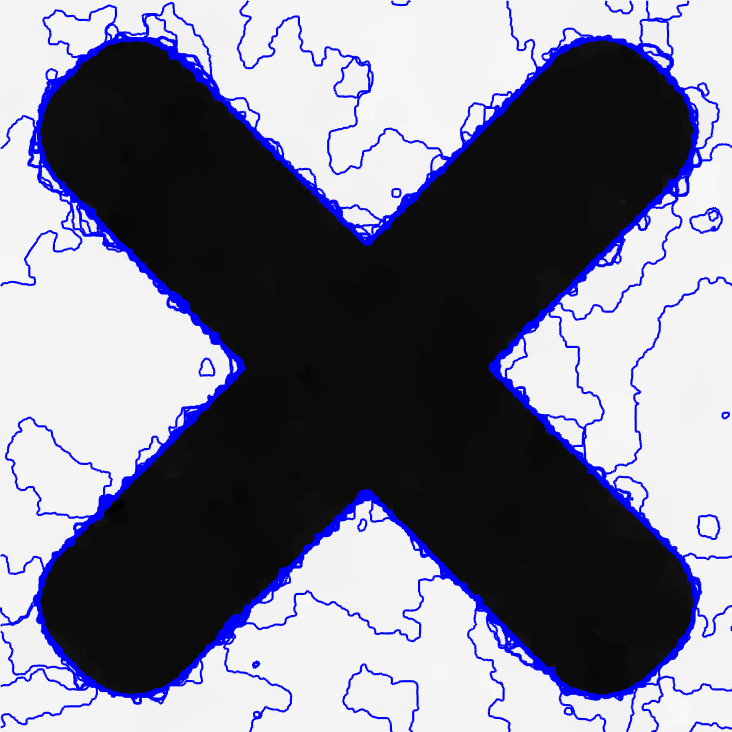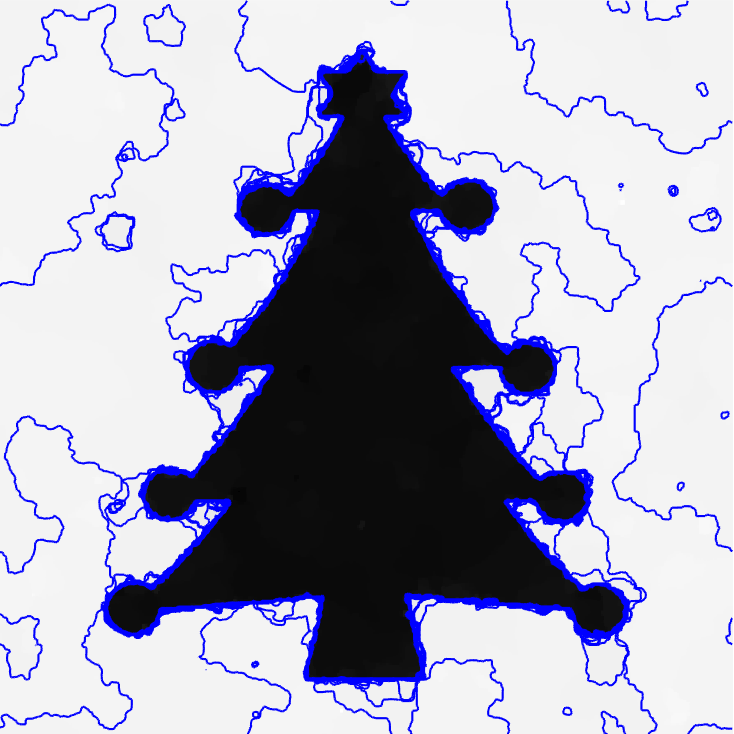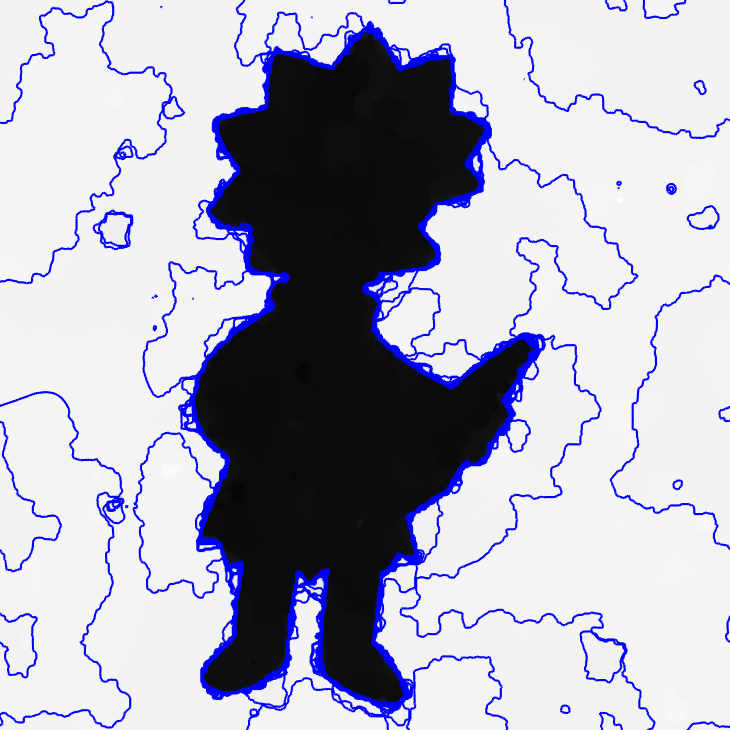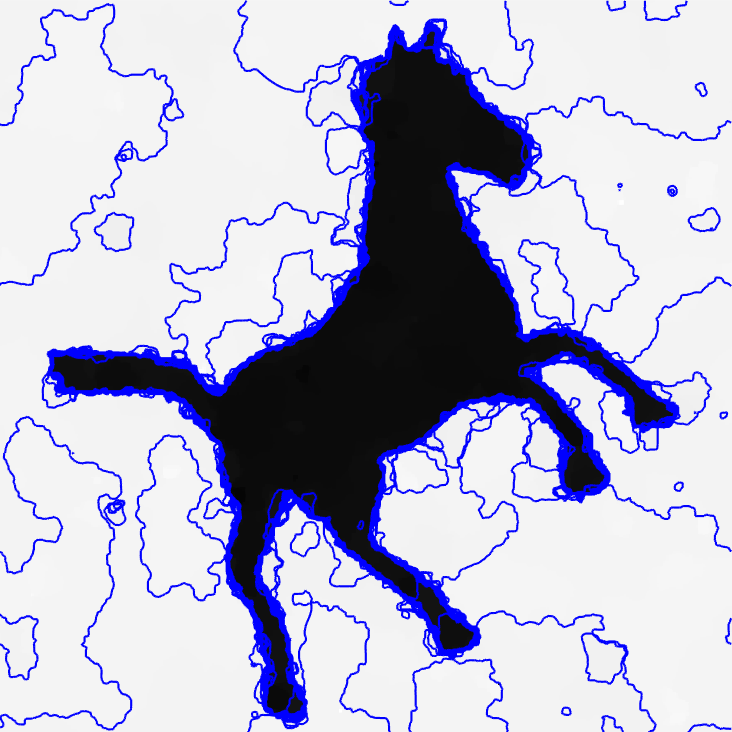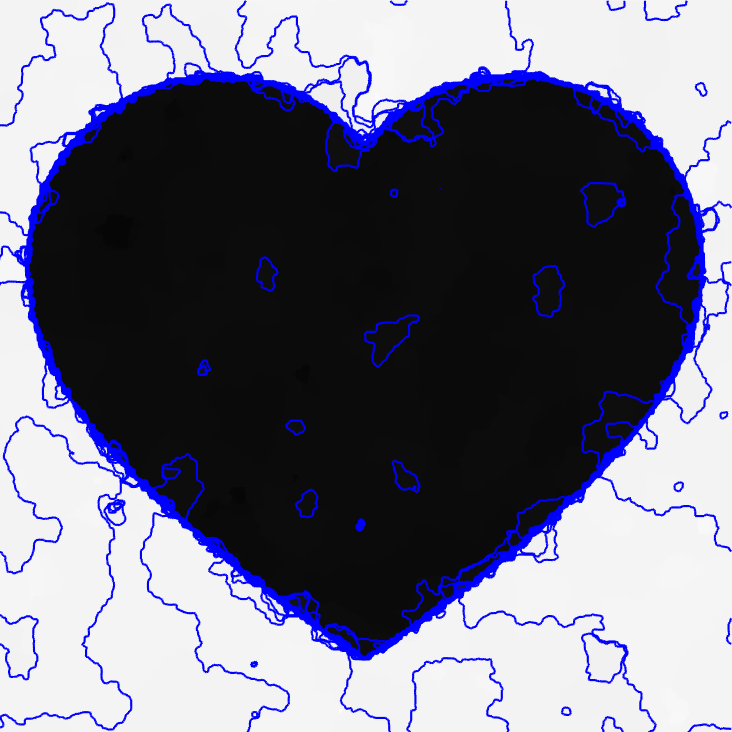Section: New Results
Inverse problems with sparsity prior
G. Peyré, V. Duval, Q. Denoyelle,C. Poon
In [12], we have studied the stability of a classical image processing method, the Total Variation (TV) Denoising model introduced by Rudin, Osher and Fatemi [171]. While TV denoising is a well studied problem, our contribution is one of the first to address the impact of noise on the solutions. We have shown that the level lines of the denoised image (hence the edges and the gradient of shades) are located near an area called “extended support” which depends on the curvature of the image to recover. This yields a precise description of the so-called “staircasing” effect which is characteristic of the method, as well as the support stability of the method (see Figure 12). In particular, we have proved that indicator functions of calibrable sets are stable to noise, in the sense that the level lines of the denoised image will be close to the boundary of the original set.
In [38], we have studied the problem of recovering a sparse signal (say, a sum of Dirac masses), from its blurred, partial, Radon transform, or equivalently by sampling the low frequency coefficients of its Fourier transform along a few radial lines. We have proved that, using a total variation (of measures) regularization approach in the spirit of [96], one may reconstruct exactly the signal under some geometric condition, or, in a compressed sensing approach, with high probability if one subsamples the coefficients. We propose a numerical algorithm to exactly solve this problem, by a converting it to a few low-dimensional Semi-Definite Programs.


